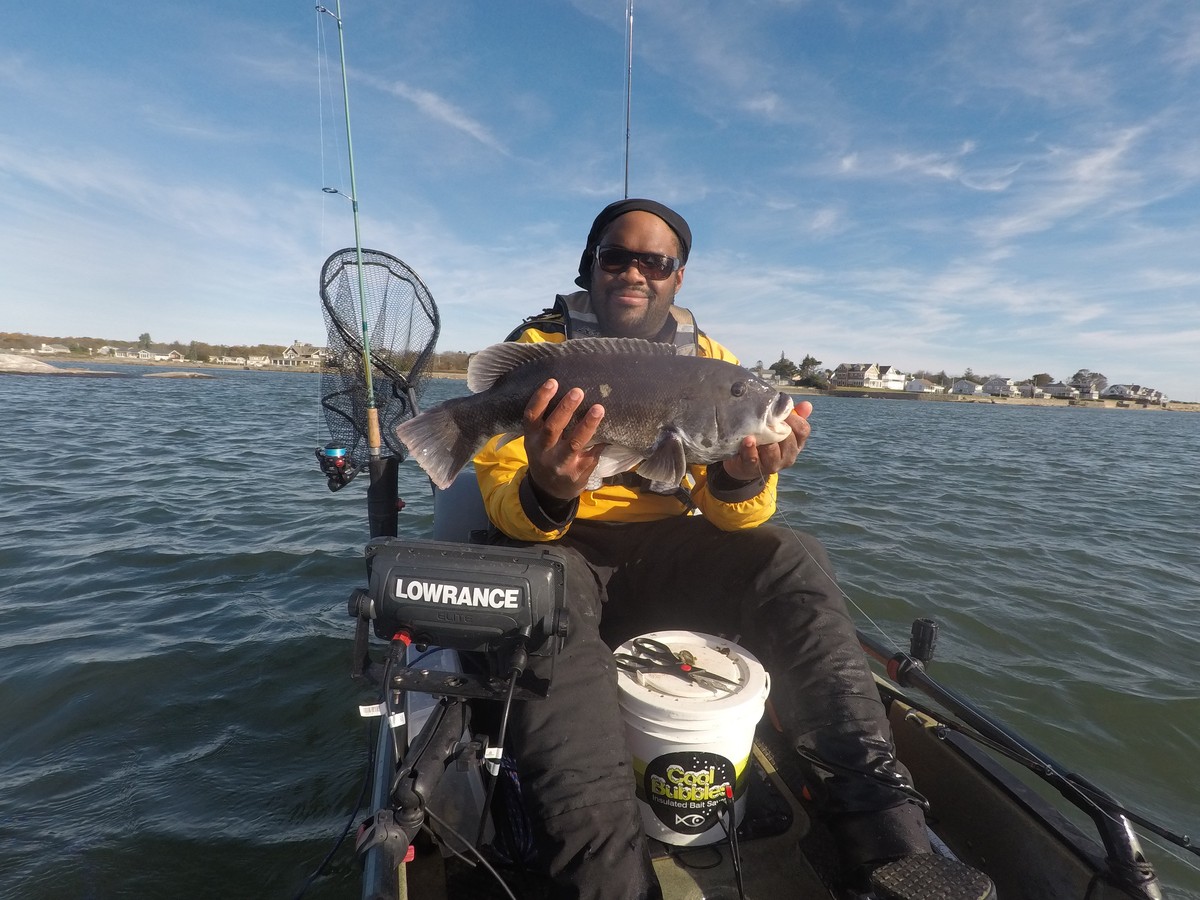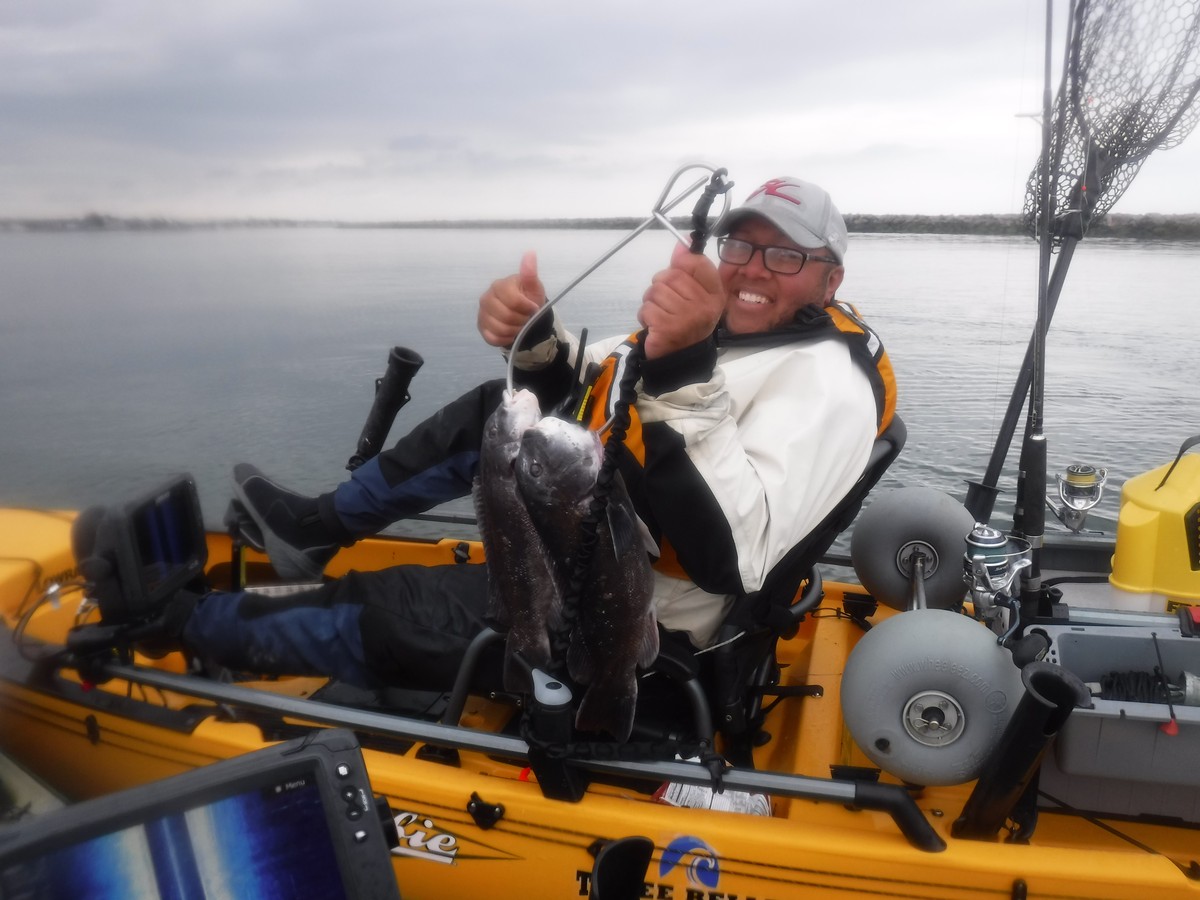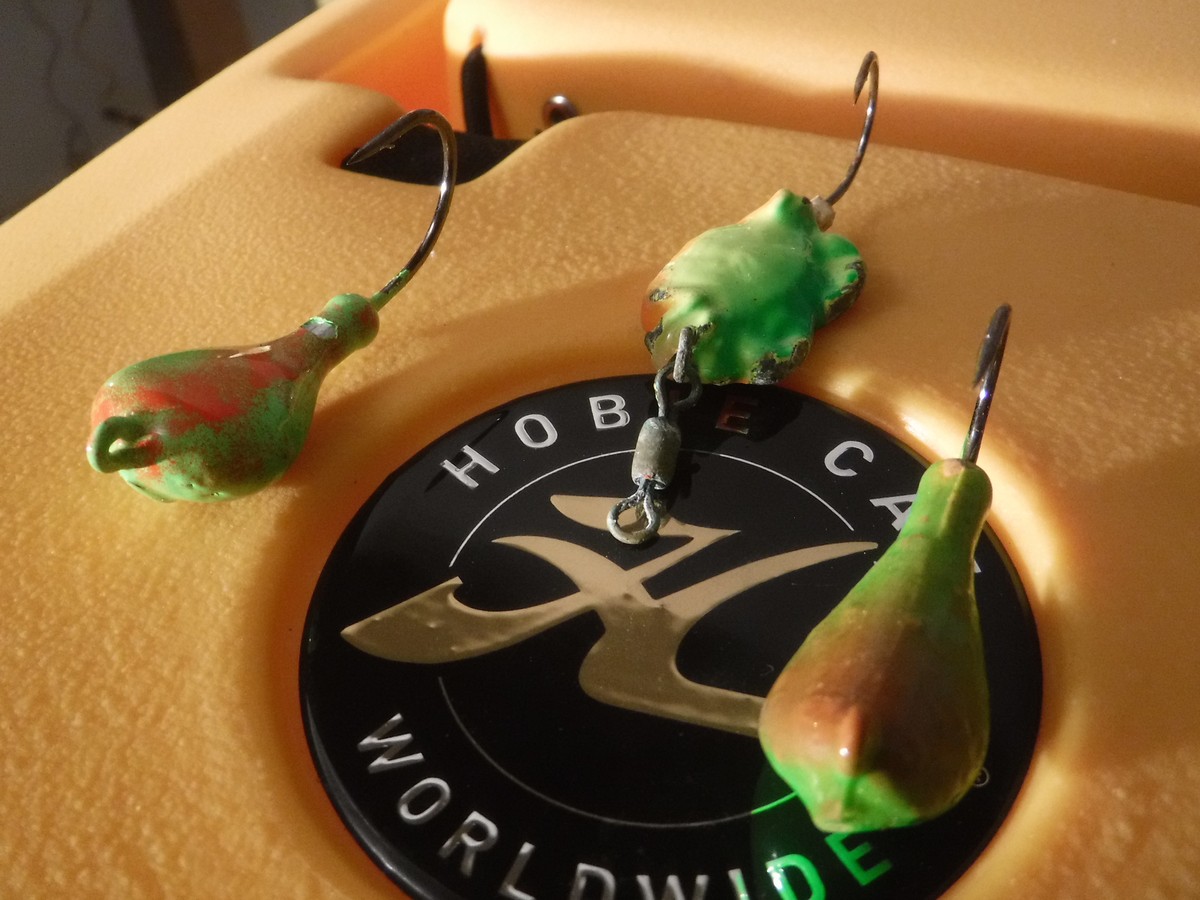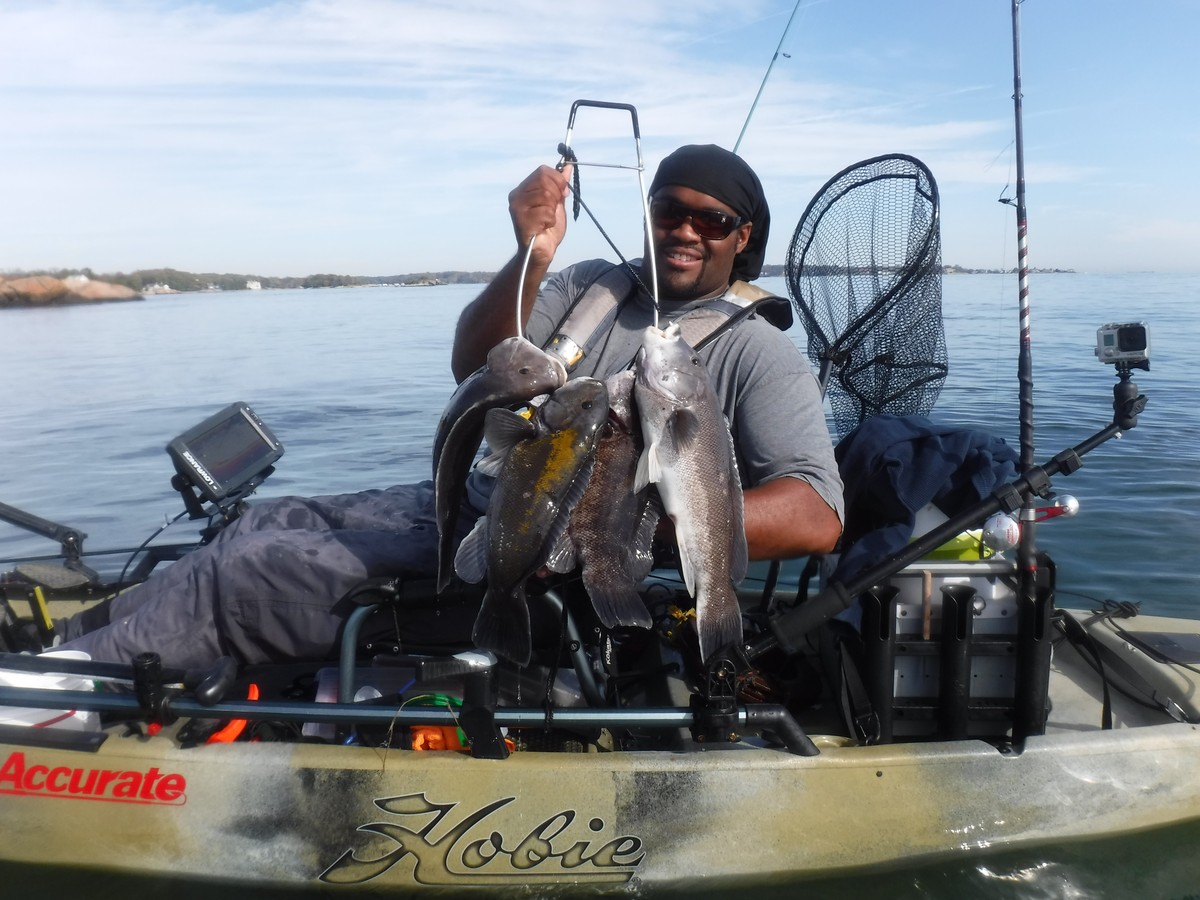
In my home waters of Long Island sound there aren’t too many things that excite me more than the fall run. During this time of year as the weather and water temperatures start to drop, it gets the fish into feeding mode. There’s usually tons of baitfish all over in massive schools and most of the time there are predator fish smashing them out of the water. There are striped bass, bluefish, and false albacore up and down the coastline in a feeding frenzy. Most of them
are fattening up for their fall migration.
As much as I love bass, blues, and albies the fish that I really love during the fall is tog. Our fall tautog season usually opens around October 10th and stays open until December 6 and has a four-fish creel limit with a minimum size of 16 inches (regulations vary from state to state so check your local regs). Tautog, commonly known as blackfish, can be found around rock piles, reefs, wrecks, and bridge pilings. They love sticking close to structure looking for crabs and other crustaceans to forage on. If you can find some good structure, then chances are you can find some good tog fishing.
During the early part of the season when the water temperatures are anywhere from the mid to low 60s to the low 50s is the best time to get some decent fish from a kayak. There are a ton of good places that are ideal for a kayak due to the ability to get right into some shallow water structure. Traditionally tog are known to be in deep water holding tight to structure but when the temps are right they can be found in some real shallow water looking for a easy meal. On the coastline there are plenty of jetties and rock breakwalls that are excellent spots to target tautog. They provide the perfect habitat for the fish to find food and plenty of rock caves for them to hide in if they sense danger. The only downfall at these spots is their popularity with tog fisherman. I like to avoid the crowds as much as possible and I have found some good spots that hold decent fish by just doing a little exploring.

Finding Good Structure
There are a ton of inshore rocks and boulder fields along the Connecticut coastline. Many of these spots are looked over by boaters because they are a hazard and they tend to avoid them. These are the places that I like to target first. Just like when fishing for any species of fish, a spot with little fishing pressure will usually produce some quality fish. These tautog are a slow growing fish and when they find a spot they like they will visit it frequently. I have found some amazing tog grounds that are passed right over by many fishermen that will zip right past going to more popular fishing grounds. These low pressured spots are gems and if fished correctly they will produce some good fish.
The use of electronics is very helpful when looking for tog water. I use a Lowrance Elite Ti with side imaging and this unit is amazing at helping find some prime tog structure. The ability to be able to see what’s to the side of you with amazing detail is such an asset when trying to locate good structure to target these fish. Good electronics will also give you things like water temp and the ability to mark and save your spots. Keeping a personal log of what spots are good is also a good idea.
Water depth is something to pay close attention to also. I personally like water in the 10- to 20-foot range but I’ve caught good fish in water as shallow as 2 feet. I found that when the water temp is on the warmer side the tog will go into some skinny water, especially during a flooding tide. If I am on the water during the incoming tide, I usually start in the shallowest part of the water. If I don’t find anything shallow, I start slowly moving out into deeper and deeper water until I find a good bite. I try my hardest to position myself on the high side of a dropoff or right on top of a bunch of submerged boulders. Little drop offs and crevices will usually hold some good blackfish.
When I fish for blackfish I usually anchor up over the structure I want to fish. I have seen some people who like to drift or hold themselves over structure without the use of an anchor. From what I’ve observed, fishing in this manner is easier around bridges and water with slower current. I prefer finding some good structure and trying to position myself with the use of a anchor. I also have a Hobie anchor trolley installed on my kayak to assist me in my anchoring and positioning of the kayak. Another thing not to forget is the fact that you’ll be anchoring in some places that are known for claiming anchors.
Finding a good wreck anchor is important. For smaller kayaks something as simple as a boulder works fine. With my Mirage Pro Angler I had to get a little more creative. I found some old brake rotors in my uncle’s scrap pile a few years back and tied them together with some cheap rope from Walmart. I remember when my fishing buddies first saw this I was the laughing stock of the local fishing community, but it worked so well that it became almost like the local kayak standard. Also, anchoring in a kayak can be difficult and dangerous if not done correctly so please be careful. Some spots can have very strong current and can become very dangerous for an anchored kayaker so always pay attention to the water conditions and what’s going on around you.

Rods, Reels, and Lines
When I’m targeting tog from the kayak, I like a few different setups to get the job done. Over the past few years blackfish jigs have become really popular and they work rather well when used properly. They are especially good when fishing shallow water on lighter tackle. When I fish jigs I opt for a medium heavy rod in the 7-foot range with 20- to 30-pound braid with a 30-pound fluorocarbon leader. I prefer a low profile baitcasting reel but this technique works well with medium spinning gear also. When it comes to jigs there are tons to choose from, but you need to be careful when purchasing them. Try and find something with a good hook. Blackfish are very strong and if you get into a good fish they will test your tackle.
Lately I have been using a little bit heavier gear when I target tog. I have had a few situations where I hooked into a good fish and my medium-heavy gear was way out gunned. Fishing light tackle is fun but after being owned by a few large fish I decided to step my tackle up a bit so in the future I can be ready when I hook into a trophy fish. I had a rod custom made to my liking just for tog fishing. The rod itself is a spiral wrapped Lamiglass 7’6” GSX 70/20 equipped with a Accurate Valiant 300 reel. This combo has a ton of stopping power and that’s what’s needed when trying to keep a trophy tog out of the rocks. It’s the difference between a fish, and a fish story! On this rod I use 40-pound braid attached to a 60-pound mono shock leader. When I fish this combo I usually fish a simple high low rig which is just a weight on he bottom and a hook on top. I choose my weight depending on the depth and the speed of the current. Most of the time I use something in the 1- 2-ounce range. I also like a strong hook so I go with Gamagatsu 4/0 live bait hooks.
Bait is another important piece to this puzzle. I use some type of crab 90 percent of the time. My main choices are Asian shore cabs or green crabs. I have fished with clams in the early parts of the spring season a few times but in my opinion, nothing works better than crabs. When I go in a trip I like to bring a variety of bait. Sometimes it doesn’t matter what you have, and the fish will eat anything, but other times they will get very picky and key in on one type of crab. Also make sure you have plenty of bait. Blackfish are well known bait thieves and you don’t want to run out of bait on a good bite. It’s always better to have too much bait than not have enough. I also recommend having a decent landing net. You don’t want to have that trophy fish next to the ‘yak and not be able to land it.
I hope this article was helpful and maybe taught someone a few things about the wonderful world of kayak tog fishing. If you’ve never tried it, you should give it a try. You’ll be shocked at how much fun these fish can be. Good luck and tight lines!
Check back weekly for new videos and stories by the Hobie Fishing Top Guns.
